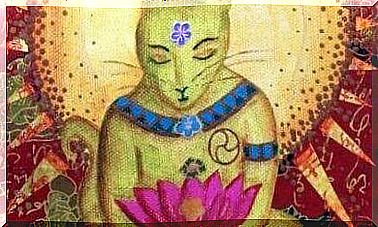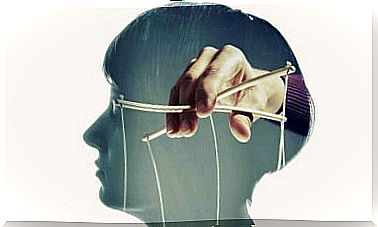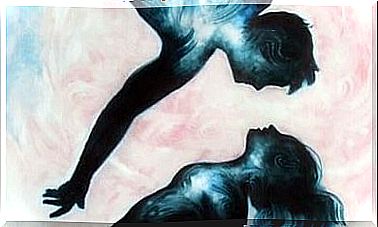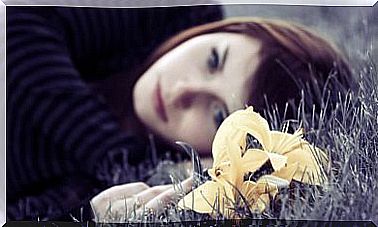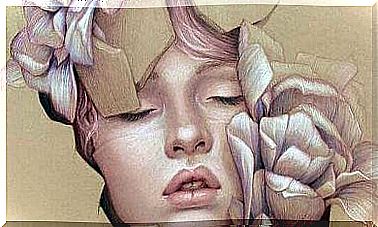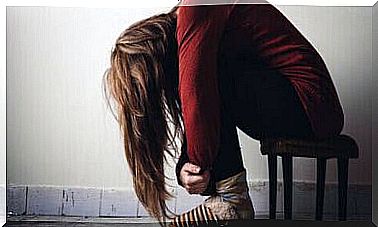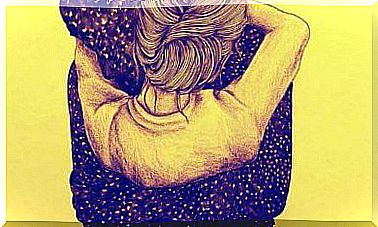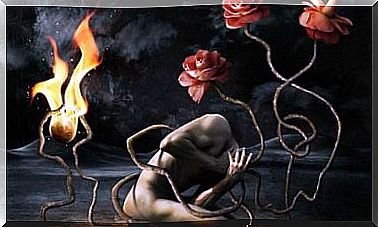Fear Of Bees: Causes And Treatment
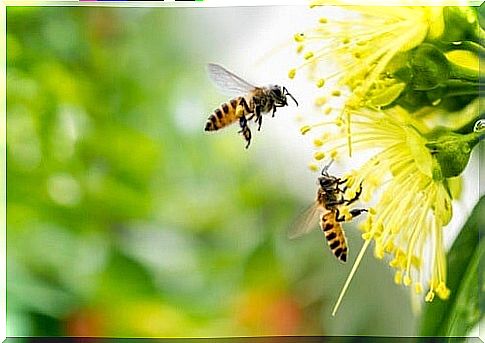
There are many people who are afraid or feel a strong repulsion for insects. In some cases, they can even develop an irrational fear. One of the most frequent phobias related to insects is apiphobia, or the fear of bees, wasps or bumblebees. In these cases, the simple flutter of one of these animals or simply the sight of a nest can trigger a series of rather unpleasant symptoms.
Although they are rather peaceful insects towards humans and essential to the natural cycle, bees trigger panic in a large percentage of the population. It is estimated that around 3% of the population is afraid of bees. In the next few lines, we delve into the symptoms, causes and consequences of apiphobia.

Symptoms of apiphobia
Apiphobia, or excessive fear of bees and wasps, is also known as melissophobia (from the Greek “lemon balm”, meaning bee). As the name suggests, it is an anxiety disorder, and specifically a phobia. It occurs when in the presence of a certain stimulus – in this case wasps, bees or bumblebees – there is an extremely intense or irrational fear.
In addition to the feeling of fear, the person feels a strong sense of discomfort and anxiety. In this sense, the most common physiological symptoms include: dizziness, nausea, tachycardia, hyperventilation or breathing difficulties, tremors, headaches, fainting, etc.
On the other hand, cognitive symptoms are also manifested, that is, those that affect the sphere of thought. The person who is afraid of bees shows lack of concentration, intrusive thoughts about the possibility of the number of bees increasing, thoughts of death or distorted thoughts about the situation.
Finally, as in most anxiety disorders, there are two main behavioral symptoms: avoidance and flight, which are completely natural in dangerous situations. For this reason, the person will try to avoid bees at all costs. And, when unavoidable, it will escape their sight.
How does the fear of bees arise?
In the case of phobias, two possible causes are generally considered: having experienced a traumatic experience with the insect firsthand or having heard of it. Being stung by these insects is quite common and is experienced as an experience not to be repeated due to the pain felt.
Compared to other phobias concerning animals, therefore, apiphobia presents itself as a less irrational fear, given the health risk. Nevertheless, it must be said that the severity of a possible is greater if the person is allergic or if he is bitten by several insects at the same time.
On the other hand, phobias are also associated with observational learning. That is to say, if a loved one suffered from apiphobia as a child, they will most likely have transmitted that same fear to us. Or, simply, we have learned the behavior of avoiding or reacting to the appearance of these insects. Or again, our fear is reinforced by constant warnings of danger (real or not) related to these insects.
Aftermath
Generally, animal-related phobias occur in childhood, a phase of life in which they do not tend to have great consequences, except for the discomfort felt. Zoophobias tend to disappear over the years; otherwise, the fear remains and increases, even affecting the life of those who suffer from it.
In this sense, it is necessary to underline the difference between the fear of bees (or wasps) and a phobia, an anxiety disorder. In the second case, fear can limit the life of the subject. For example, it can affect where to buy a house or leave where you live.
You can stop attending specific places, even against your wishes, for fear that there are bees. And you can even experience the symptoms of anxiety when you are near a flower for fear that these insects will approach.
Taking this into account, apiphobia can have both mild and severe consequences depending on the impact on the subject. In any case, it is an anxiety disorder that should be treated and resolved to improve one’s quality of life.
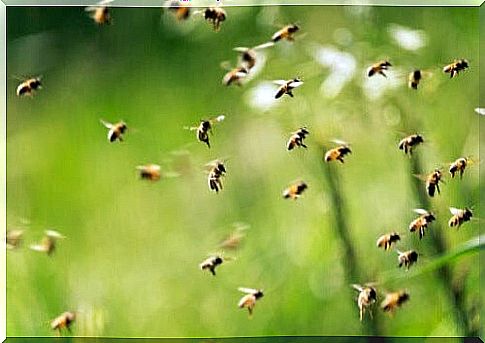
Treatment of fear of bees
In the case of phobias, cognitive-behavioral therapy is the most effective treatment. Specifically, three intervention strategies are generally applied: relaxation, modification of phobic and irrational thoughts, and systematic desensitization or exposure techniques.
Being an anxiety disorder, the individual must learn and acquire the resources necessary to cope with the stimulus or to relax during a panic attack. In this sense, he will be taught progressive muscle relaxation or endogenous relaxation techniques. These tools are also useful in the early stages of systematic desensitization.
Whether using the latter technique or another strategy, exposure to fear-generating stimuli must occur gradually. For example, it can initially be conducted with images and then gradually bring the person closer to the real stimulus until he no longer feels a state of extreme anxiety.
In summary, the irrational or extremely intense fear of bees and wasps is configured as a phobia and, as such, must be faced together with a professional psychologist. Only in this way, the person will be able to improve the quality of his life and to carry out activities never carried out due to fear.
